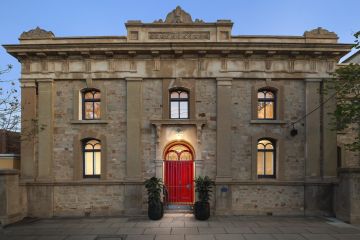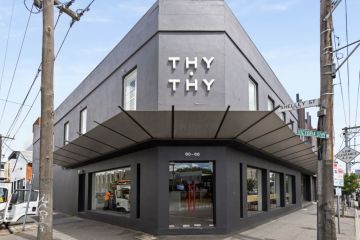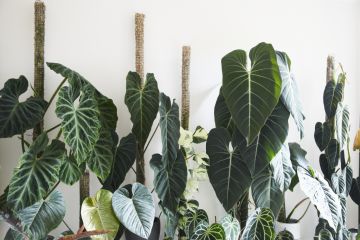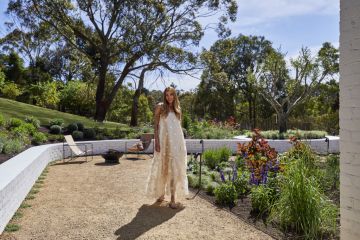'Will never date': The five key materials that define the classic Australian home
Australian homes are more diverse than in most other countries around the world, and the best are constructed with a signature style that showcases the earthy, textured materials inspired by our landscape. It is the combination of these natural elements that makes a statement of individuality, while reflecting the country’s architectural identity and unique mix of cultures, eras and people.
Looking at recently built homes on the market today, you’d be hard-pressed to find a property that isn’t built or styled with one of the following materials. We spoke to some designers about how they use the Australian palette.
Timber
The vast array of timber colours, textures and stains make this a quintessential material of Australian homes. Not only is it long-lasting, the versatility of timber lends itself to virtually every home element and adds a natural warmth to a space.
Over time, preferences towards certain timber varieties have shifted from richer woods with red undertones such as mahogany, jarrah and pine to lighter styles including blackbutt, birch and beech. Victorian Ash and moisture-resistant teak for outdoor furniture are among other currently popular variants.
“Timber will never date, however, expect people to look for more variety in external profiles and textures,” says director of Altereco Design James Goodlet.
“Recycled timber has been in vogue for a while now and provided it can still be sourced offers a rustic, unique, one-off feature, provided you are adventurous enough to break from the norm.”
- Related: This overlooked area sets the tone of your home
- Related: The coastal home with art at its heart
- Related: Inside the carefully crafted home of an art director
Concrete
While it has been used throughout the world for centuries, concrete is a more contemporary material in Australian residential architecture, typically featured on facades, flooring and furniture. When used outdoors, an acrylic finish is typically applied to keep the material maintenance-free and water-resistant.
Alex Porebski, director of Porebski Architects, is a concrete enthusiast who sings its praises for floors, walls, ceilings, columns and beams, through to built-in seats. He says the material can take on both a subtle role by showcasing its soft and spatial qualities, or to create a standalone statement.
“We often use concrete as it is so versatile and can be shaped to create curvaceous forms. Whether used with face-brick, or blockwork, or on its own, the tectonics of the project can be expressed,” Porebski says.
In contrast, Goodlet says, “It’s in vogue right now, but very difficult to get right! Concrete is a very fickle and unpredictable material that will change over time. I expect people will start to opt for safer alternatives.”
Marble
Marble has returned as the go-to luxury interior material of Australian homes – replacing the granite more common in the 1990s and early 2000s – and inspiring a boom in mainstream reproductions. While the popularity of faux versions will undoubtedly fade over time, the look and texture of real marble is enduring.
“Introducing a natural stone element into your home adds sophistication and texture, along with pattern and movement. Marble is known for its natural beauty and often complements existing architectural elements, such as timber flooring or rendered walls,” says furniture buyer at Coco Republic Alexandra Dewar.
Since marble is porous, it is rarely used outside and most popularly seen on kitchen benchtops and bathroom surfaces. The organic differences in each piece make every one a unique work of art.
Brick
Brick has been an Australian staple since European settlement, particularly the solid-clay varieties used on facades, interior walls, roofs and outdoor paving. It’s a classic material choice that complements most colours and architectural styles.
“For a building material that fits in your hand, [true] craftsmanship can be achieved to create breathtaking structures and architecture. It is a material that has an enduring mindset for people and gives a project longevity,” Porebski says.
Since the 1950s, brick veneer has become a common building variation. Brick veneer is generally more cost effective than double-brick and sometimes installed for aesthetic purposes. Double-brick is a better thermal mass performer as it more effectively regulates the internal temperature of the structure.
“A mix of bricks and metal, or timber cladding embodies the quintessential Australian home,” Porebski says. “These materials and textures give a nod to the past – old colonial brickwork, metal roof and weatherboards – while at the same time they provide a contemporary look with new colours and textures.”
Zinc
Zinc is another material associated with modern Australian homes, joining aluminium and iron as popular on facades, as cladding, and for outdoor furniture.
Designers appreciate zinc in particular because it is low-maintenance, adds character, and is available in a variety of colours to suit different palettes.
“It is a very versatile material, allowing itself to be folded and curved to follow the forms of the building,” Porebski says.
Goodlet predicts metal variants will soon be more commonly used on customised elements inspired by the hospitality industry, such as bespoke handrails, towel rails and vanity mirror cabinets.
We recommend
We thought you might like
States
Capital Cities
Capital Cities - Rentals
Popular Areas
Allhomes
More
- © 2025, CoStar Group Inc.







